Running a restaurant is no easy feat. It’s a famously tough business to profit from, with statistics showing that three out of five new restaurants close within a year, and four out of five won’t make it past five years. To stay afloat, many resort to pricing certain menu items far above the cost of the ingredients.
But not everyone is keeping quiet about it. Some workers decided to pull back the curtain on which products face the steepest markups at their establishments. If you’re curious, you’ll find their confessions—along with other behind-the-scenes secrets—below.
More info: Reddit
#1
Not so much a secret but a lesser known fact...
Kirkland products, the white label brand from Costco, are independently tested to beat OR EXCEED the industry leading product in that category. Razor blades. Cookies. Cheese. Laundry pods. If it doesn’t beat the industry leader, they won’t put the Kirkland name on it.
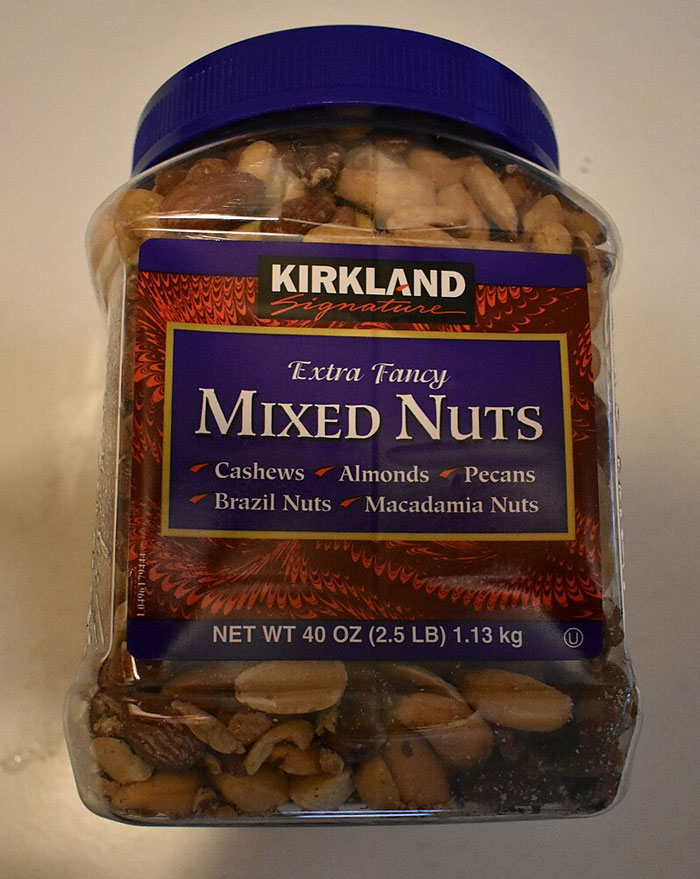
Image credits: min2themax
#2
Yes, yes, yes! They are RARELY cleaned out. Like almost NEVER. Bugs, dirt, food particles, whatever.
At two previous restaurant jobs I felt bad that customers were getting gross ice (both places had a single machine), and mentioned it to my managers at the time. They both brushed it off as having better things to do with my time, so I used to "accidentally" kick the plug out of the wall in the evenings, come in the next day, and find a half-melted ice machine. I was stuck cleaning it, but it was worth it, since I felt better about the ice being served. We had to use ice from the store down the street for the rest of the day, but it wasn't like it cost the restaurants much money.
One bartender told me he would "accidentally" drop/break a glass into an ice machine to serve the same purpose if the management wasn't being cool about it. Broken glass = scoop out and dump all the ice, and might as well clean the thing since it's empty.
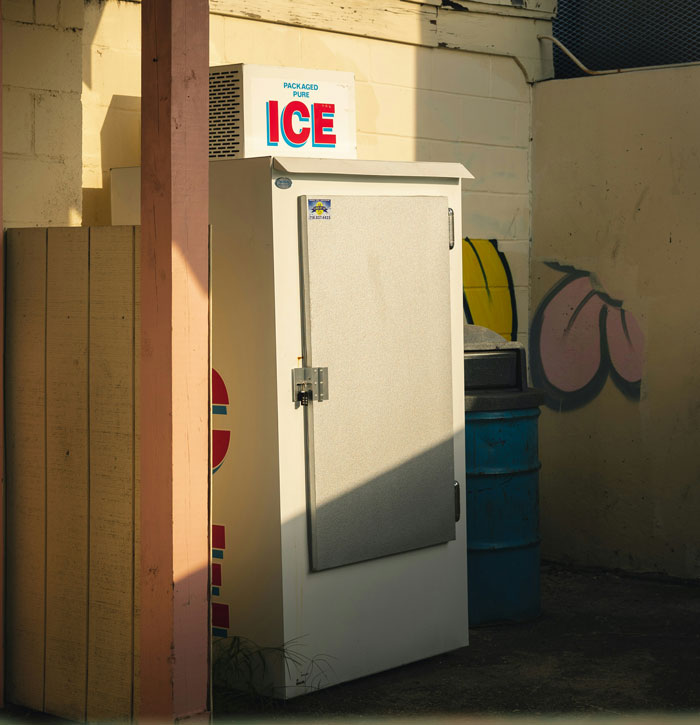
Image credits: Krokodyle
#3
My husband used to work in a gastro-pub in a well-to-do area where it was the only option.
The baked Camembert. It was literally the Camembert from Aldi. £1 each. Baked and sold for £15 to share.
Everyone was convinced it was some really posh continental fine cheese with a special Camembert oven or some s**t. Nope, they could do the exact same thing at home for a pittance of the price.
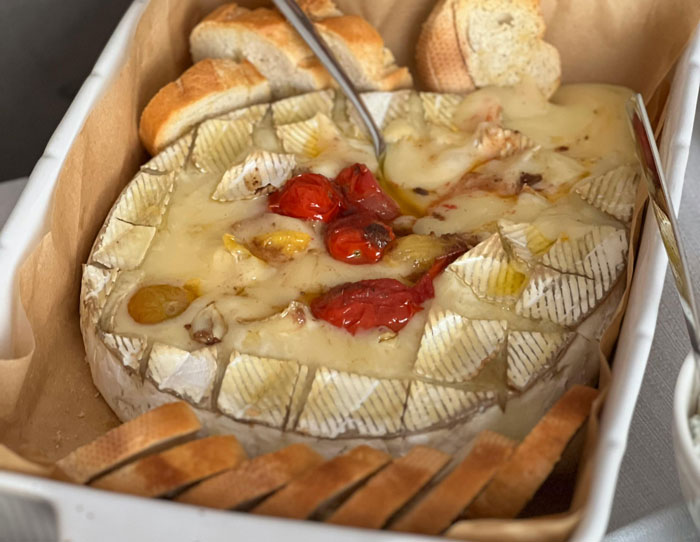
Image credits: Thraell
The thought of starting a restaurant carries a sense of romance. There’s a certain beauty in creating a space where people can gather, share meals, and make lasting memories. But when it comes to making money, the reality is far less charming.
Profit margins typically range from 0 to 15 percent, with most averaging just 3 to 5 percent—not the most inspiring numbers. So, unless you’re dreaming of failure, pricing has to be smart enough to keep the doors open.
#4
I'm not a chef by any stretch of the imagination, but I do have a small BBQ business. I've had some people call me out on my pricing for say, pulled pork. They even say, "I saw pork shoulder at Kroger's for $1.99/lb". I tell them that is great, but I source slightly higher quality than commodity pork. Aside from the meat cost, there is the cost of that fresh ground pepper and other seasonings. Then the cost of wood and propane for my smoker, which wasn't cheap, and right now I'm trying to figure out how to replace it with bigger, better, because it is falling apart. The cost of wrapping material. The cost of the sauce that comes with it (homemade from scratch). Let's not mention the minimum of 8 hours I had it in the smoker, watching it carefully, then letting it rest for the right amount of time before shredding. Oh then there is the knowledge base it takes to do it right, which took many years of crappy BBQ that only I ate to get here. But absolutely, you could buy commodity shoulders at the store and replicate for a fraction of the price. And they should.
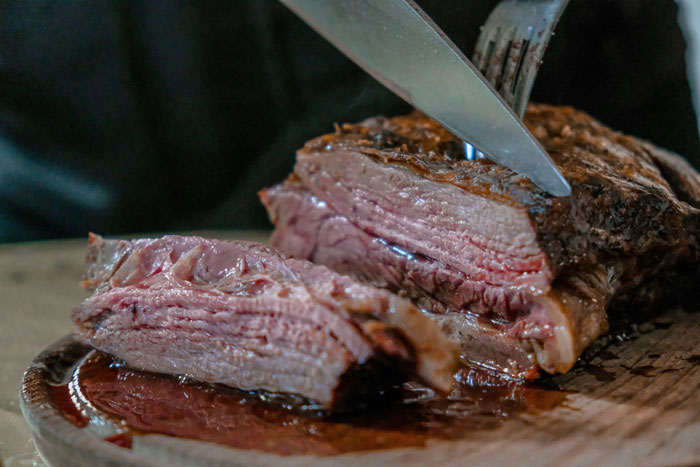
Image credits: dinnerwdr13
#5
Most of our desserts are purchased from the Wal-Mart directly across the street then marked up 500%. For the price of a couple of pieces of cheesecake, you could just go across the street to Wal-Mart after your meal and buy a whole one.
We just drizzle a bit of chocolate or raspberry sauce on it so that it doesn't look exactly like the one from Wal-Mart.
Also, a smoker outside the building doesn't mean your barbecue is fresh. Most of it is frozen. Sometimes we just throw logs on there so it *looks* and *smells* like we're barbecuing. Homey, we made that s**t two days ago. That's just wood you're smelling.
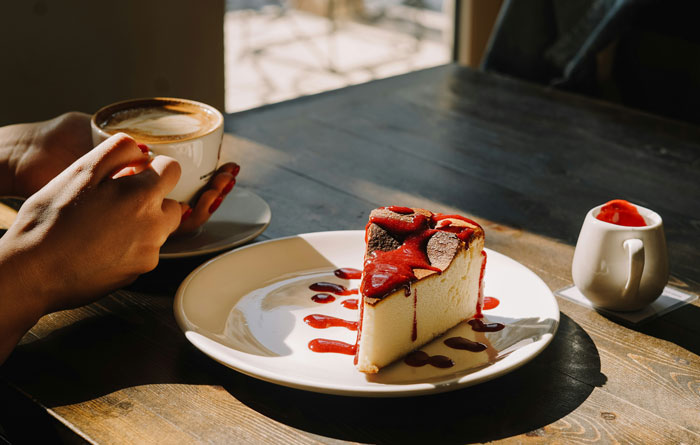
Image credits: anon
#6
Not a chef and I don't work in food service anymore, but I went to a highly praised Italian restaurant in my area, and got a pistachio cannoli. But it was actually peanuts with green dye. F**k them for insulting my eyes, intelligence, and taste buds.
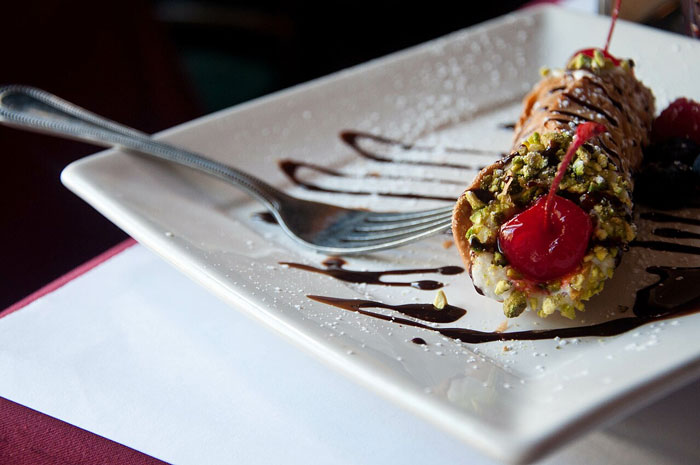
Image credits: ffj_
To learn more about what it takes to keep a restaurant on its feet, Bored Panda spoke with Humbat Mamedov, a waiter at Street Pizza in Riga, Latvia, ranked among the top 50 pizzerias in Europe. With over four years of experience in hospitality across multiple countries, he had plenty of insights to share about the industry.
According to Humbat, some menu items are noticeably more profitable than others. Coffee, for instance, can have a markup of 300-400%, while wine can be highly lucrative for places that promote it as a specialty.
“In Italy or Spain, wholesale wine prices can start at under a euro per bottle, with many costing just a few euros, while a 150ml glass at a restaurant can sell for 5 euros or more—though, of course, the quality plays a role,” he explained.
Pizza is also a top contender for strong profit margins since it relies on simple, inexpensive ingredients. “The dough has a long shelf life, and if it doesn’t get used up, it can easily be turned into bread, baguettes, or other baked goods to serve in the restaurant, which reduces waste significantly,” said Humbat.
#7
Nothing.
Some items might have higher margins than others, but at the end of the day staff wages (everywhere but the USA), utilities, tax, rates, rent etc all need to be paid, plus making a profit which is part of the point after all.
So no your glass of coke, bottle of wine, portion of chips etc is *not* a rip off.
If you care so much about the wholesale cost then a restaurant is not for you, stay at home.
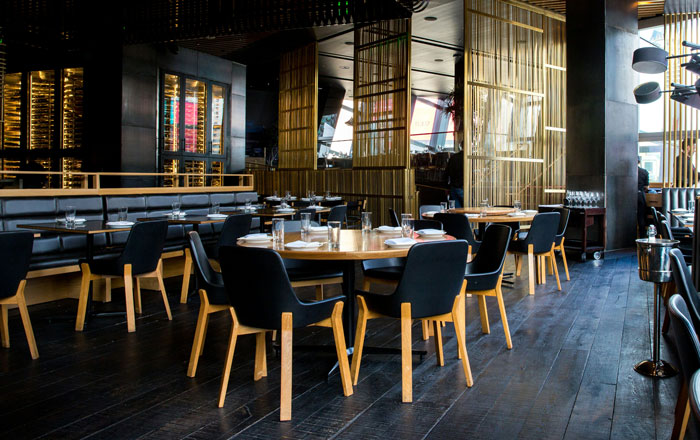
Image credits: ab00
#8
Back when I was a fry cook, some customers thought they were being slick and would order unsalted fries to make sure they got fresh ones. Us cooks would just put already salted fries back into the fryer to wash the salt off.
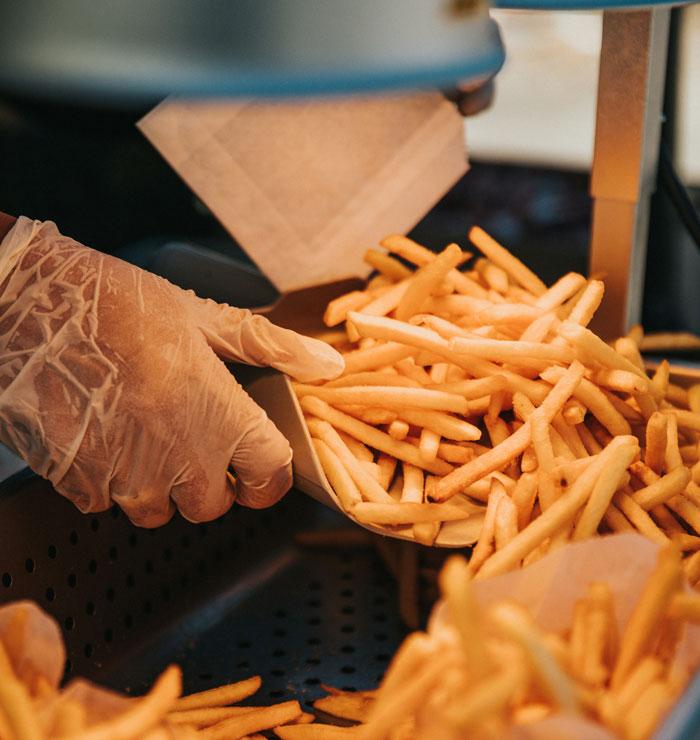
Image credits: hatsnatcher23
#9
Starbucks supervisor here. There is no secret menu, and we're not trained to make those viral TikTok drinks. Some of the more common ones, like a Cotton Candy Frap, the baristas might know, but don't bank on it. If you want us to make something 'off-menu,' have the recipe handy. As a side note, many of those drinks also rely on seasonal ingredients, so you should have a backup choice ready.
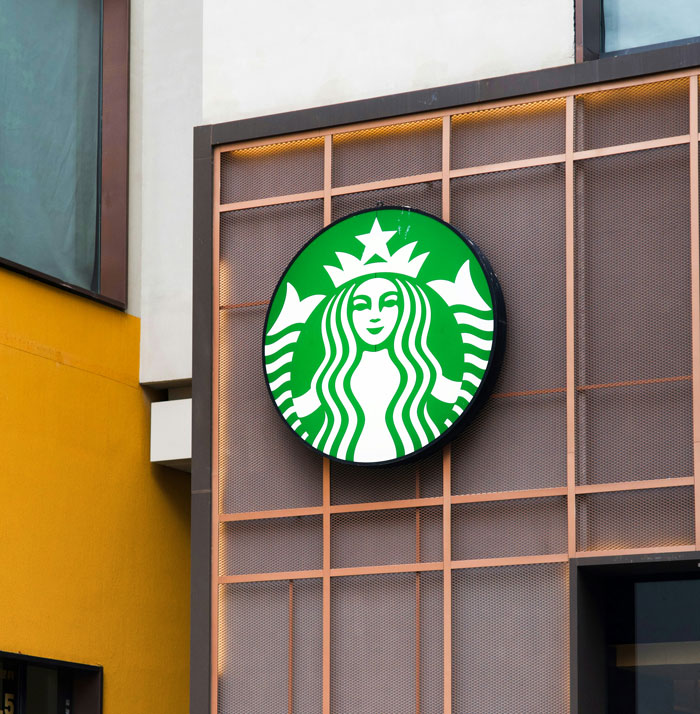
Image credits: ImaginativeStrings
A restaurant’s earnings have to cover much more than food alone. Rent, utilities, ingredients, and, most importantly, the staff who keep everything running smoothly all factor into the costs. For waiters, the job can be especially stressful.
“Working in food service is tough because you have to deal with all kinds of people and personalities—both among staff and guests,” Humbat shared. “To me, handling guests is the most demanding part. A lot depends on the restaurant itself, the concept, and the audience it’s designed for. But guests and their moods can have a huge impact on your day—they can either lift your spirits or completely throw you into a spiral of endless stress.”
“One of the biggest challenges is that in many restaurants, the workday officially starts at 11 or 12, but that doesn’t mean you can just show up at noon and everything will be fine,” he added. Waiters need to arrive at least 30 minutes early to change, review the shift plan, and restock essentials like utensils, plates, salt, and pepper.
The physical demands are equally intense. “You’re on your feet the entire shift. Breaks aren’t really a thing—if you’re lucky and it’s not busy, you might get 10-15 minutes for a meal,” said Humbat. “Sometimes, the only chance to eat is grabbing a quick bite between tasks during the busiest moments.”
#10
My ex use to work at Applebees. She told me that everything you eat there is pre-packaged and just microwaved once you order it, including the ribs and steak.
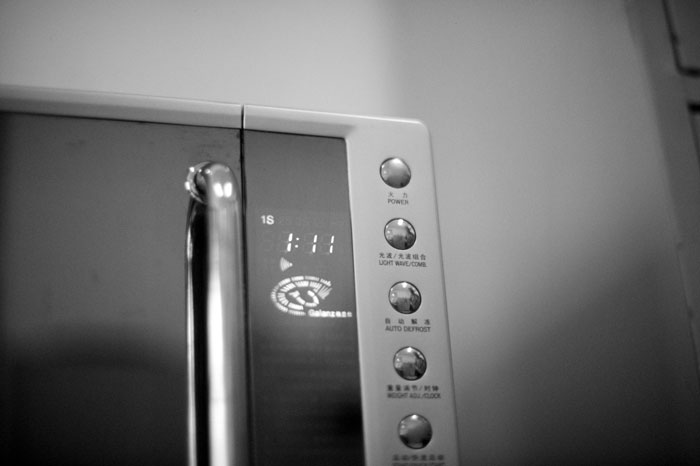
Image credits: ChizzMiss
#11
Maybe not a "secret secret" but just not something people realized.
At Wendy's, the cooked burgers that don't get sold, those go into a pot in a refrigerator, and they get made into TOMORROW's chili.
The crispy chicken that doesn't get sold today? Those go into a pot in the fridge and those get made into TOMORROW's crispy chicken salads.
Back when Wendy's had a salad bar ... the burger buns that are going stale at the end of a day? Those got made into tomorrow's garlic bread on the salad bar.
None of this is unsafe, all of this is approved by the department of health, and none of this is a trade secret ... but I bet you didn't realize that.
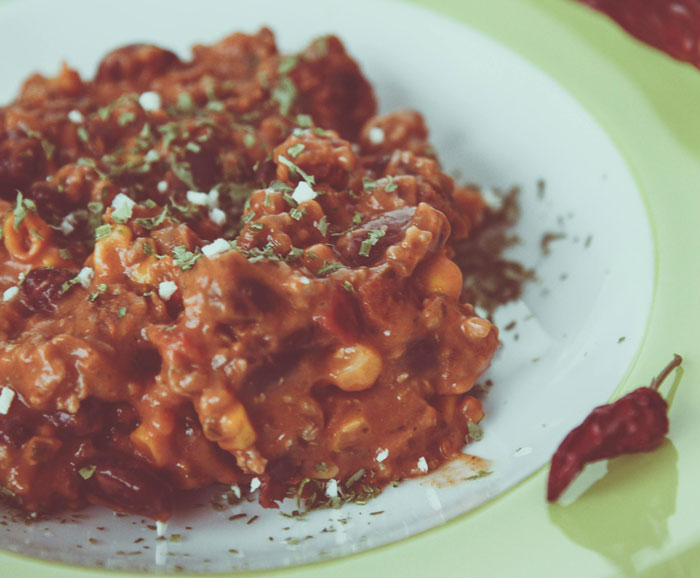
Image credits: whomp1970
#12
Not really a rip-off, but there's an Italian place nearby that serves a deliciously savory dipping sauce called Bagna Cauda. $13 gets you about an 8 oz crock of it and 6 soft breadsticks to dip. I googled it and it's just melted butter with anchovies and a little sour cream melded in. I made a fondue pot of it for New Year's Eve. Super easy, inexpensive, and impressed the hell out of our guests.
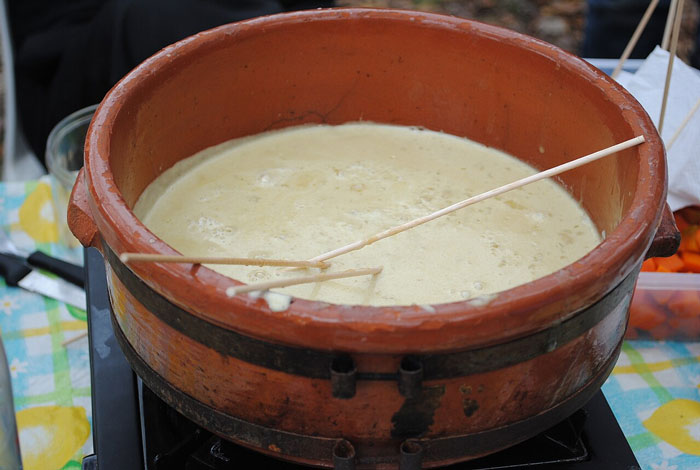
Image credits: SuzQP
However, as guests, we have the power to make life easier for restaurant workers—and it doesn’t take much effort or extra money (though tips are always appreciated).
“The core of it all is basic politeness,” said Humbat. People in the service industry deal with rude or entitled customers daily, so a little kindness can go a long way. “Honestly, I think everyone should spend a year working in food service instead of the army. You’ll get both physical and psychological training here.”
If you expect it to be a hectic day for the restaurant, like a weekend or holiday, coming prepared with a reservation helps immensely. “And when the restaurant is about to close, it’s best to leave 10-15 minutes before the doors actually shut,” Humbat advised. “After that, the staff still has to clean the entire dining area and prepare it for the next day, which takes at least another 30 minutes.”
“Also, please don’t say, “I know the owner,” to get special treatment,” he said. “So do we. It’s the most ridiculous line when you’re trying to push for something after being told no. No means no.”
Being thoughtful isn’t complicated. Have patience, be understanding when things don’t go perfectly, and remember—the restaurant wants you to have a great experience, but that only works when you do your part too.
#13
Not a chef but I worked at a Japanese for a while and we had this thing called a Volcano roll. It cost $7.25. A California roll there cost $3.75. The Volcano roll was a Cali roll cut into the shape of a triangle and topped with spicy mayo that has been heated up with about $.10 worth of fish, literally just a few bits. You are much better off ordering a Cali roll and paying $.50 extra for spicy mayo on the side and asking them to heat it up.
I had one guy come in with a girl and he ordered a couple of regular rolls like spicy tuna and yellowtail, along with a Volcano roll. When served in the restaurant, unless they ask us, we would put the sauce on top so it looked nice, like a Volcano. When I brought that roll over he was like, "Oh, I didn't know you guys put the sauce on, I've only gotten it for pick up and the sauce is always on the side. I don't really like it, could you bring me one one without it?" I tried not to laugh and said sure. I went back and the sushi chef asked what was wrong. I told him that he didn't like the sauce and want one without it. He laughed and said alright, so he took a Cali roll, cut it up, and put it on the plate. I brought it back to the guy and he was super pumped.
Basically this guy paid $7.25 for a roll that would have cost him $3.75 and me and the sushi chef got to split a free volcano roll. Normally I would have just told him about it, but the dude was being pretty arrogant the entire time, I'm guessing to act like he was a sushi expert to impress the girl he was with.
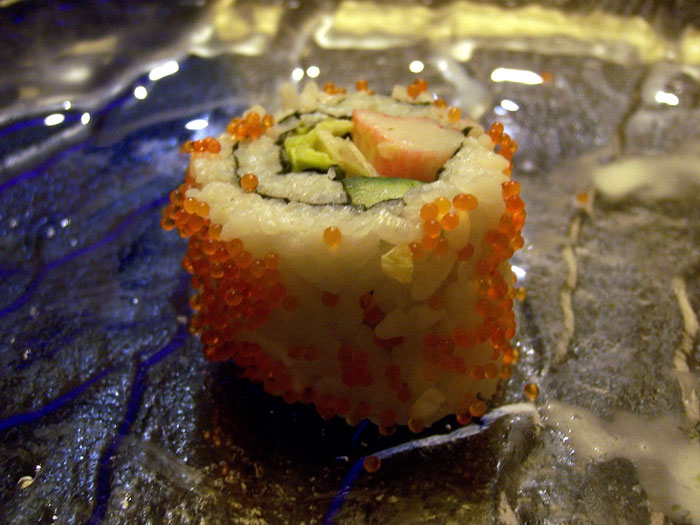
Image credits: -eDgAR-
#14
Not a chef but, in the UK if your restaurant is licensed to serves alcohol you legally have to provided free drinking water, but what they can do is charge you for the glass.
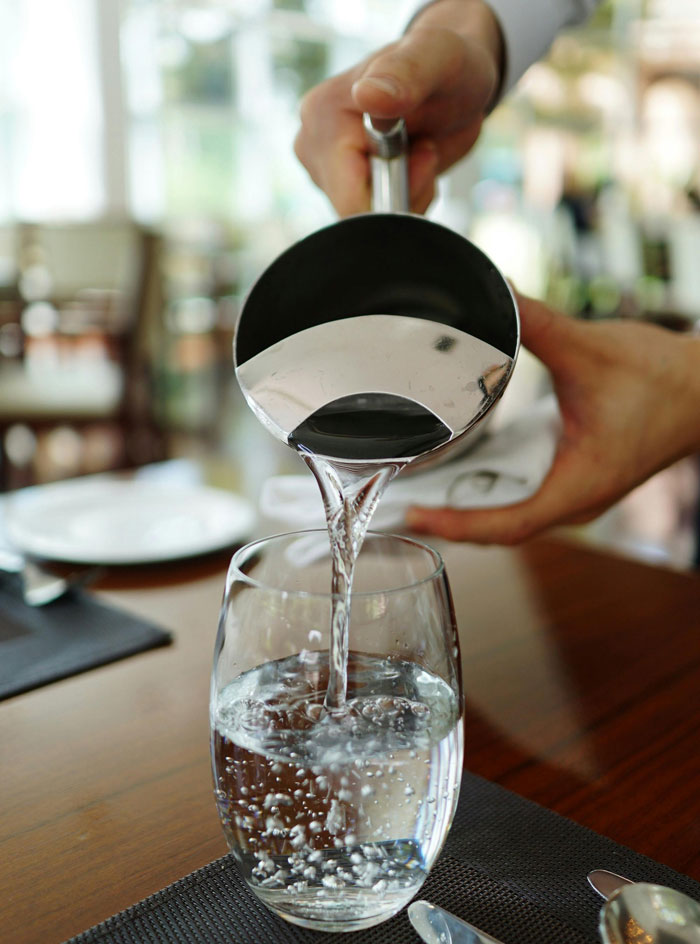
Image credits: Maaark_Nuuutt
#15
We used to sell a house-made drink with a ton of stuff we could make behind the bar for basically nothing. The cost to us, per pour, was $1.89. We sold it for $12.
Granted, that kind of thing allows us to sell expensive things for far less than other places, which actually pissed off the guys up the street from us who were selling the same products for a good deal more. So usually when you're getting ripped off via a particular item, it's letting you get something good for less. Take salad, for example. Nothing about mixed green should cost $11, but when everyone and their mother eats one, we can sell that ahi tuna steak for $24 instead of $28.
I love doing this with beer. Yes, Peroni on draft is going to cost you $6, even though our pour cost is about $1.25. But that means I can put up that log of Alesmith Speedway Stout and it will also cost you 6 bucks instead of 8 or 9. Basically - the cheap s**t should cost a ton so the expensive stuff isn't so bad.
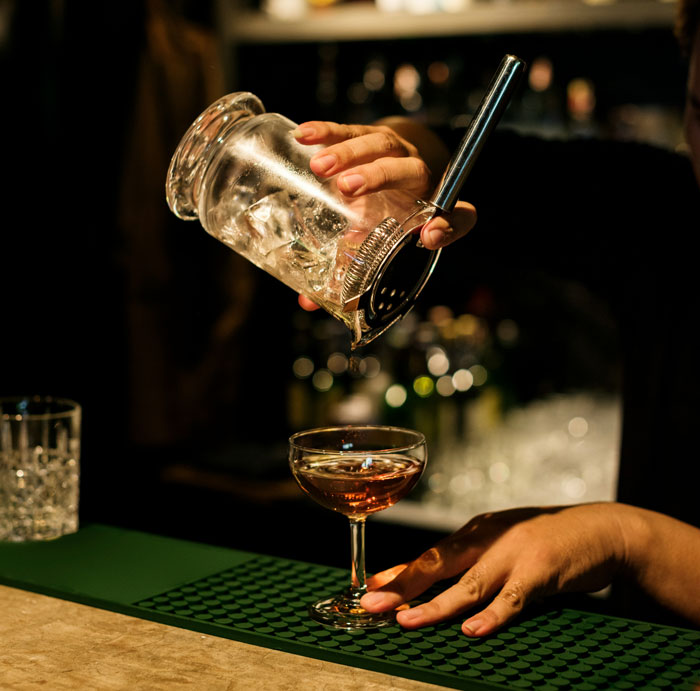
Image credits: swimbikerunman
#16
Not really food but I reported my work for watering down the liquor all the while charging $10 a beer and $12-18 for a single and double shot (hotel.)
Cant wait to have these scummy f***s loose the only thing making that shithole worth anything.
#17
Not a chef but I went to an Italian restaurant and ordered the $7 garlic bread entree, when it came out i nearly died, it was a $2 Woolworth's garlic bread loaf.
My Nonna would have actually had a heartattack if she was eating with us.
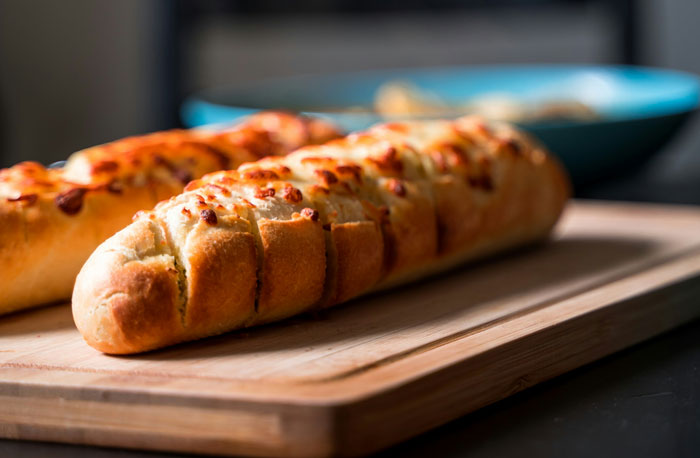
Image credits: anon
#18
Candy man here. We left chocolate out in display cases for months on end. When my friends came by to the store I told them to avoid it at all costs.
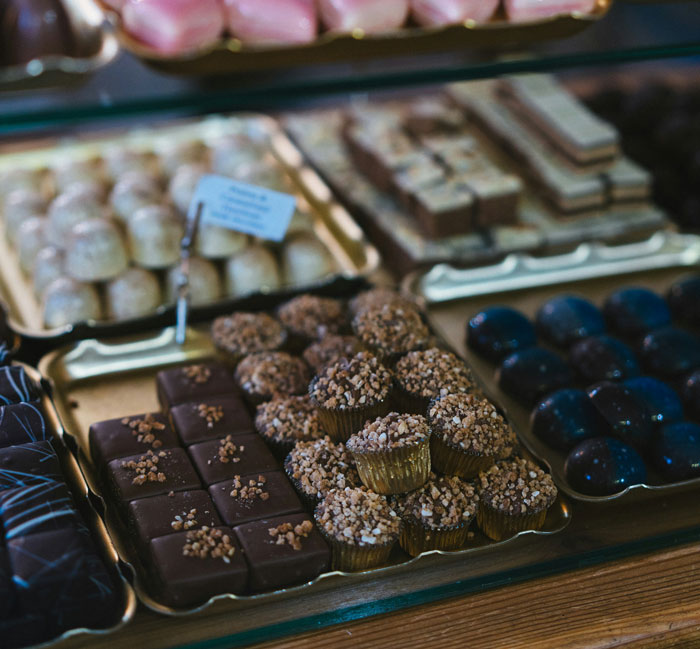
Image credits: walruswhisky
#19
I worked in a fancy country club ($25K initiation fee, then $7K/year in the 90s). A slice of "homemade" cheesecake was $7 each on the menu. One of the sous chefs stopped by the Giant Food grocery store every day on the way to work to pickup a whole cheesecake for about $5.
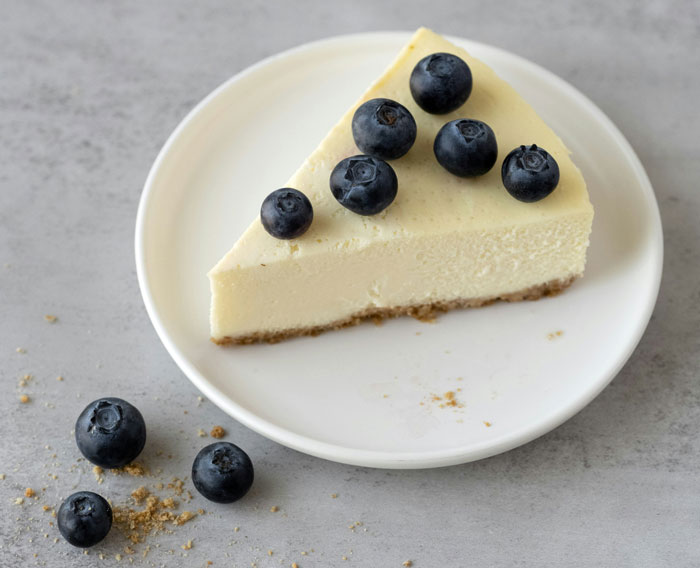
Image credits: twopacktuesday
#20
The only thing that is fresh and healthy, not pre-made, bagged and/or frozen at like all fast food places is the tomatoes.
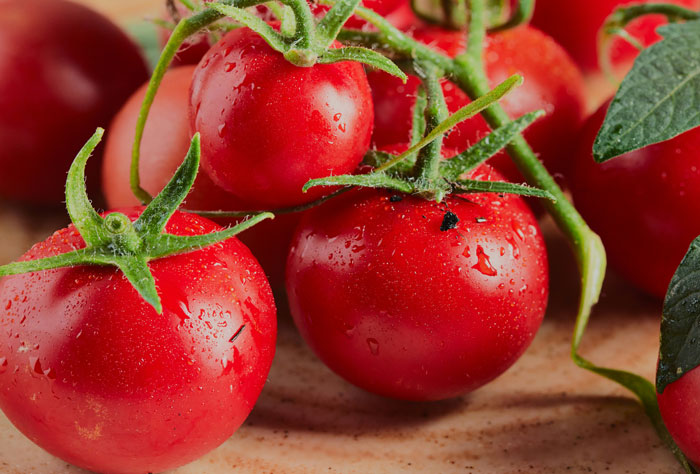
Image credits: LegacyRW
#21
Health inspection is really kind of a sham. Health inspectors tend to inspect all the restaurants in an area around the same time. When the inspector shows up at one restaurant the manager will typically notify the other restaurants in the area. I worked at a Taco Bell. When we got a call from the BK down the street that the health inspector was there, we knew he would be showing up at our place sometime in the next week. We would call in extra people to do a deep clean of everything. It did not matter that most of the year every time we hosed out under the fryer or food prep lines, we drowned hundreds of roaches. When the health inspector showed up everything was clean, so we still had a 100% on our health inspection.

Image credits: 100TonsOfCheese
#22
I'm not a chef but a victim. I was at a moderately well regarded seafood restaurant and ordered lobster tails stuffed with clams, what I ended up with was lobster tail SHELLS that had been completely emptied of the lobster meat (where did it go??) and stuffed with a mixture of breadcrumbs and minced clams that tasted like they were straight out of a can. $26 for what was essentially a lobster-shaped loaf of clam-bread. After jabbing it with my fork for a minute looking for the actual lobster tail, I called the waiter over and whispered "I think you forgot something?", and he tells me no, you were served exactly what you ordered.
#23
We have a dessert, homemade donut holes, tossed in sugar and drizzled with Nutella for $10. It's leftover pizza dough deep fried. A 45lb bag of flour is $18, so you do the math.
Shits tasty as f**k tho!
#24
We buy tiny wine bottles for $7 and sell for $37.
Spaghetti Factories house wine is Franzia box wine.

Image credits: kmrse95
#25
We serve "hot fresh baked pretzels" for $8.95.
We get em by the case frozen. Roughly $75 per box. 100 per box. We get 33 orders per box and one to eat while figuring out math.
33 orders X $8.95 = 295.35.
So profit is 220.35 (minus the cost).
So with that 220.35 we pay the electric, gas, rent, taxes, staff, equipment, etc. And thats assuming we sell all 33 orders of pretzels. Stan my line cook eats an order. Boom, down to 32. Jose burned an order. Down to 31. Barb sneaks one home in her purse. 30 orders. 3 pretzels are broken in the box. Down to 29. So our 220.35 just went down to 184.55 pretty quickly...and very easily.
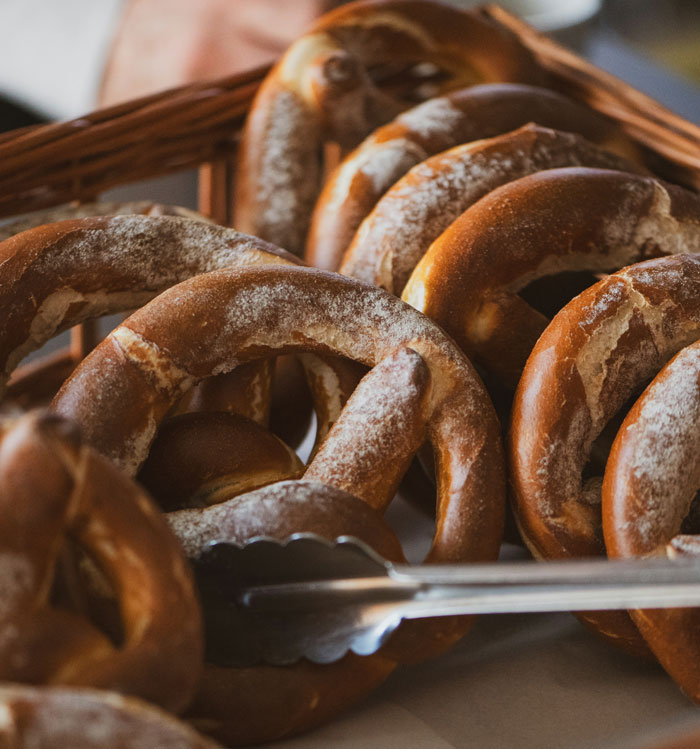
Image credits: anon
#26
Dude MAYONNAISE.
We bought that s**t in for €12,50 (that's $15) And we served it in these small cute dish/tray for €0,50.
We could do almost 500 of these servings. That is €250 ($300)
That's 20 times the original value. Thát is inappropriate and is the reason why I go against the system and eat my fries
**NO SAUCE**.
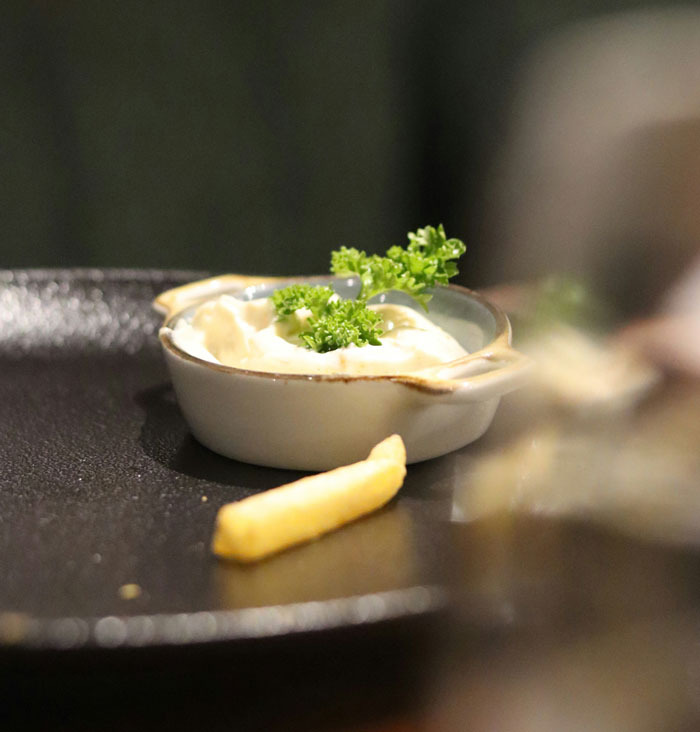
Image credits: Ronnylicious
#27
Keep in mind that to make money, we have to bump up everything by at least 300% to keep the doors open. More on some stuff. Less on others. That being said when you're picky kid just wants pasta and butter and we charge you $8.95 for it...thanks.
As a chef it's all about food costs. We often play distributors off each other to keep the costs down. And there's always more than one distributor.
The one thing you don't make any money on is chicken wings. I know you're thinking "man, why are they so expensive". The demand is exceeding the supply right now. There's only so many chickens out there. Plus we need oil to fry them, power to run the fryer, money to pay the guy that fries them, celery is expensive lately, blue cheese, the server that brings them to you gets paid...it all gets factored into it so remember that this Super Bowl when you're wallet takes a hit.
We make our money in the front of the house on the booze though. As a dad trying to make ends meet, I don't get how people can now go out and pay $10 bucks for a 12oz glass of beer. I drink for free after hours, but couldn't afford to get drunk at a bar these days! We had bars with nickel beer night when I was in school. Granted it was Icehouse or Busch, but dang.
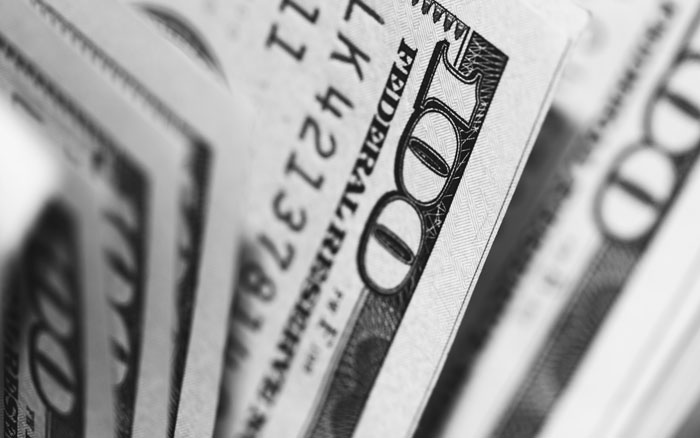
Image credits: anon
#28
Expensive city here. The biggest ripoff that customers have to pay for is the exorbitant rent restauranteurs owe to their landlords. Restaurants typically make less than 6% profit margin.
#29
Not a chef, but former waitress. Used to work in this restaurant where specialty was a seafood pasta. Each order cost the restaurant just $3 but they charged $24.
#30
If you ever go to Bertucci's just know it is the most overpriced dining experience you will ever have. You could make the equivalent of every single menu item could be made for less than a quarter of the shown price. Ever gotten Tuscan vegetables? Its 12.99 (iirc) on the menu, it is 3 slices of eggplant, a scoop of tomatoes, a scoop of zucchini pieces and some artichoke. actual cost 35 cents.







